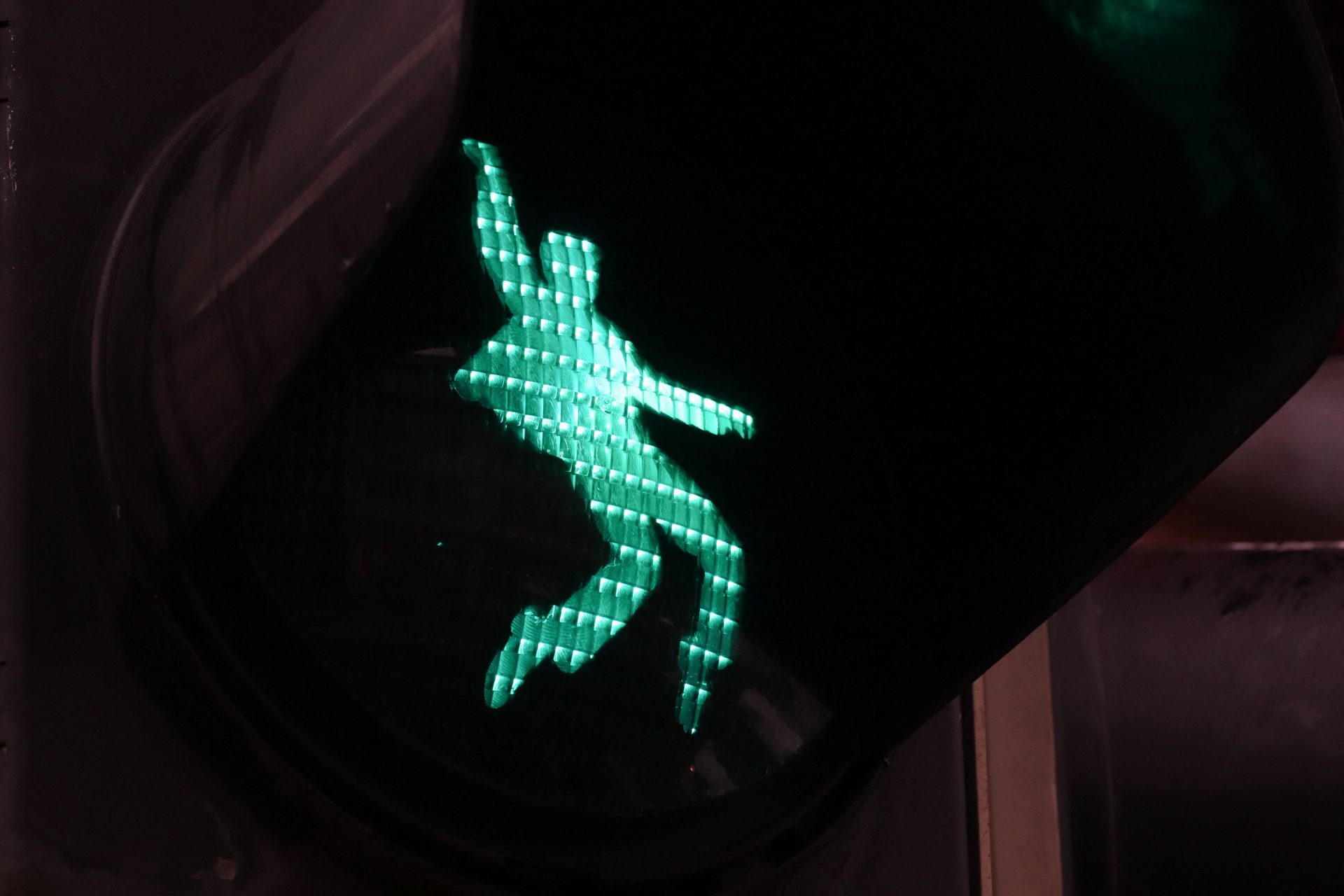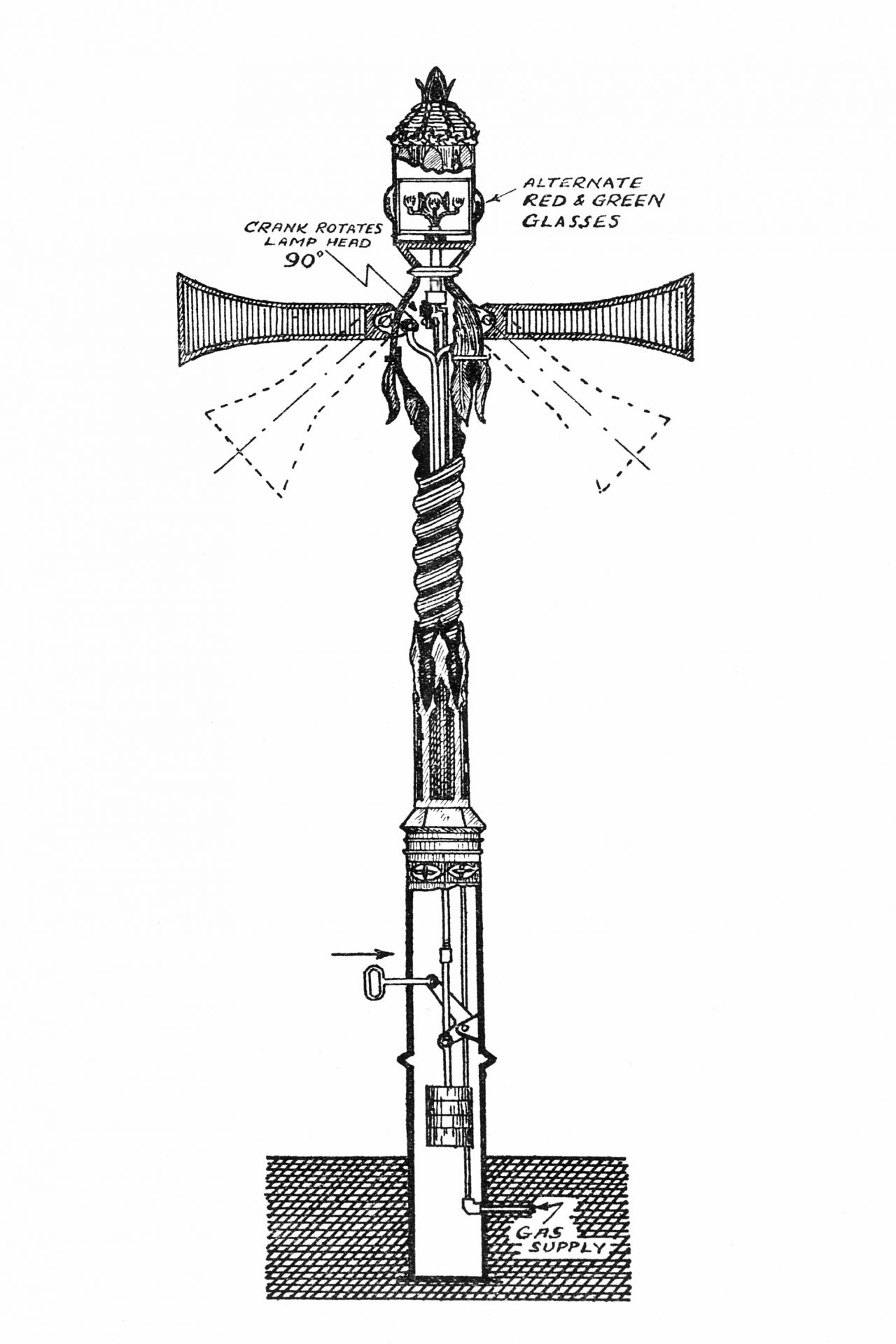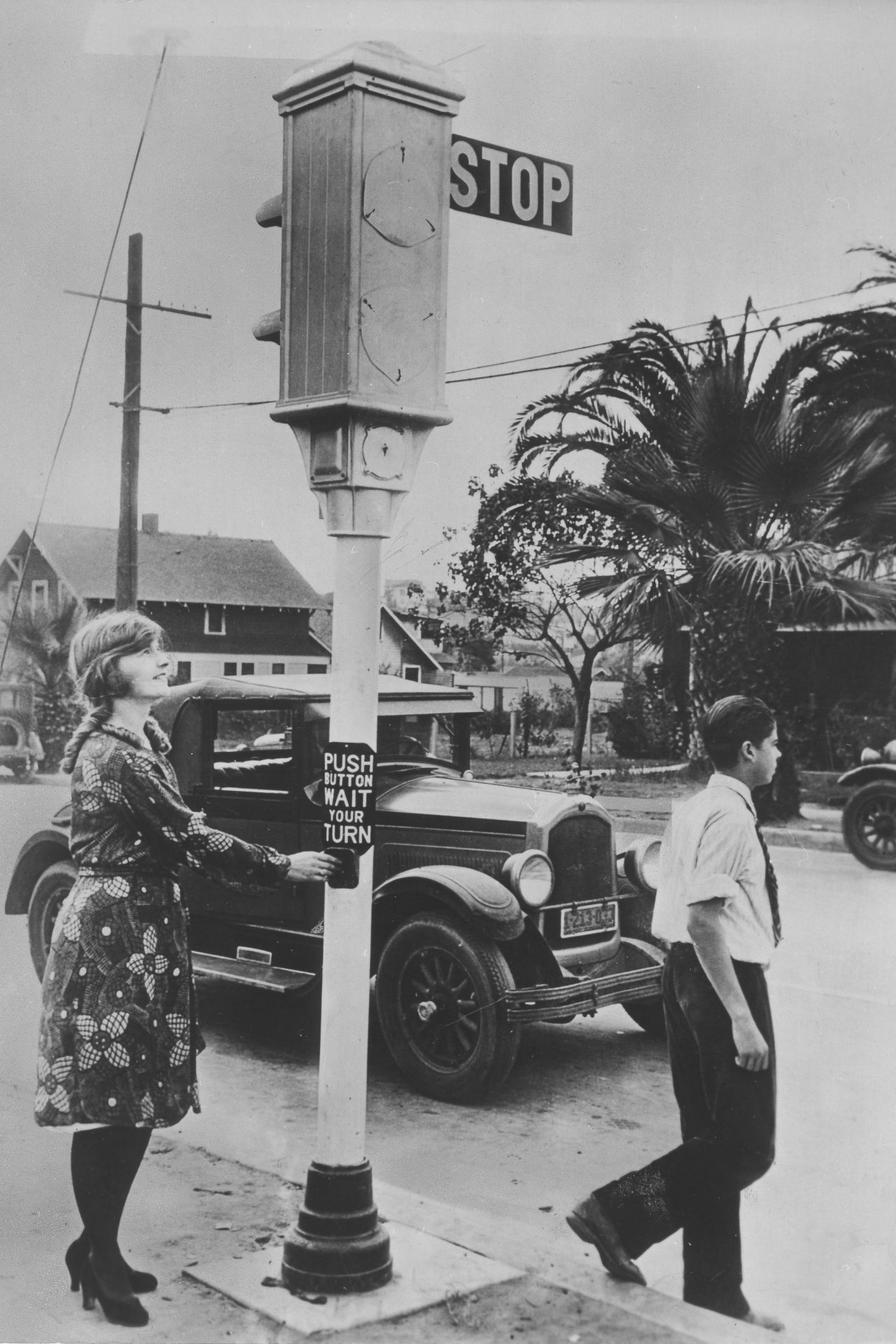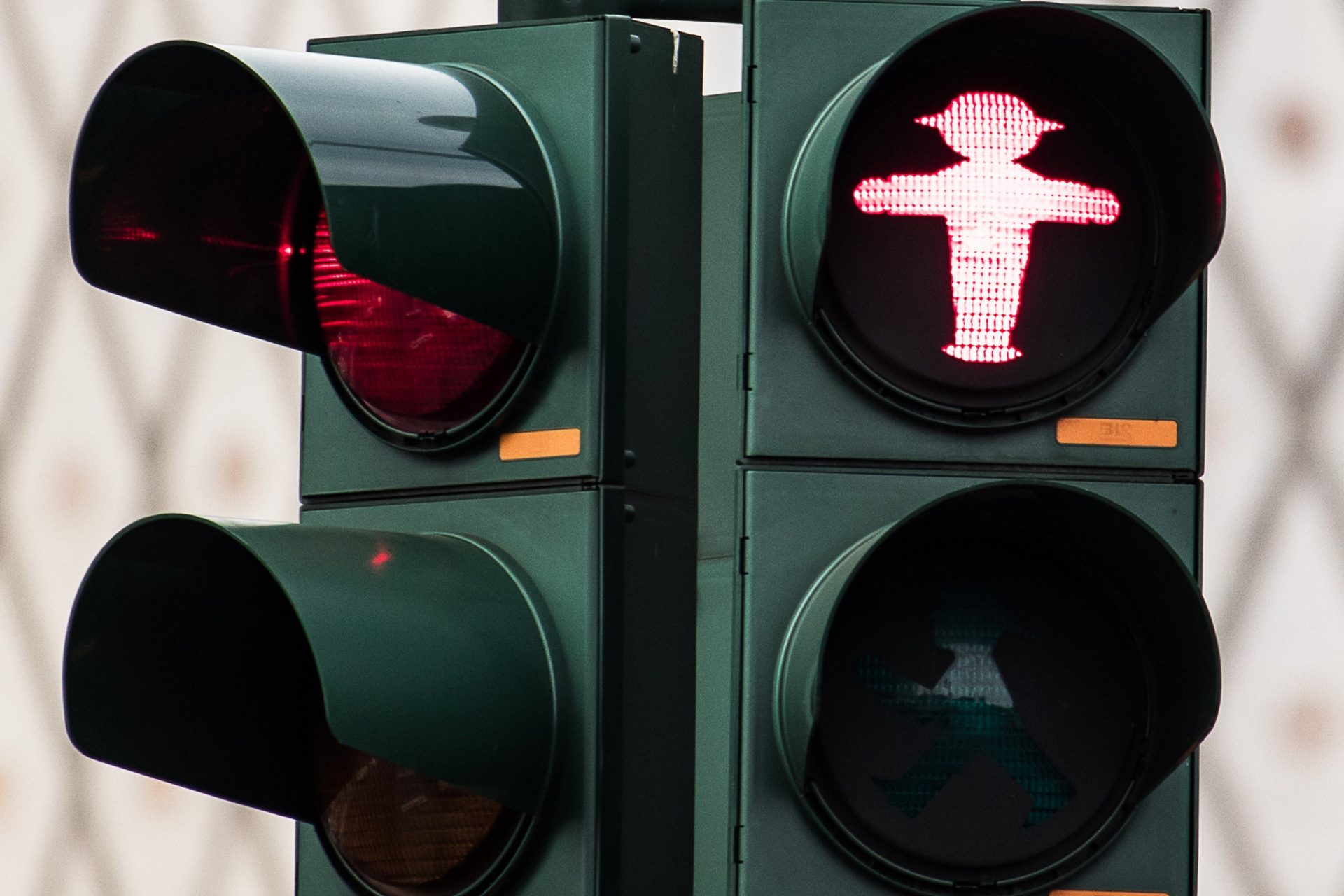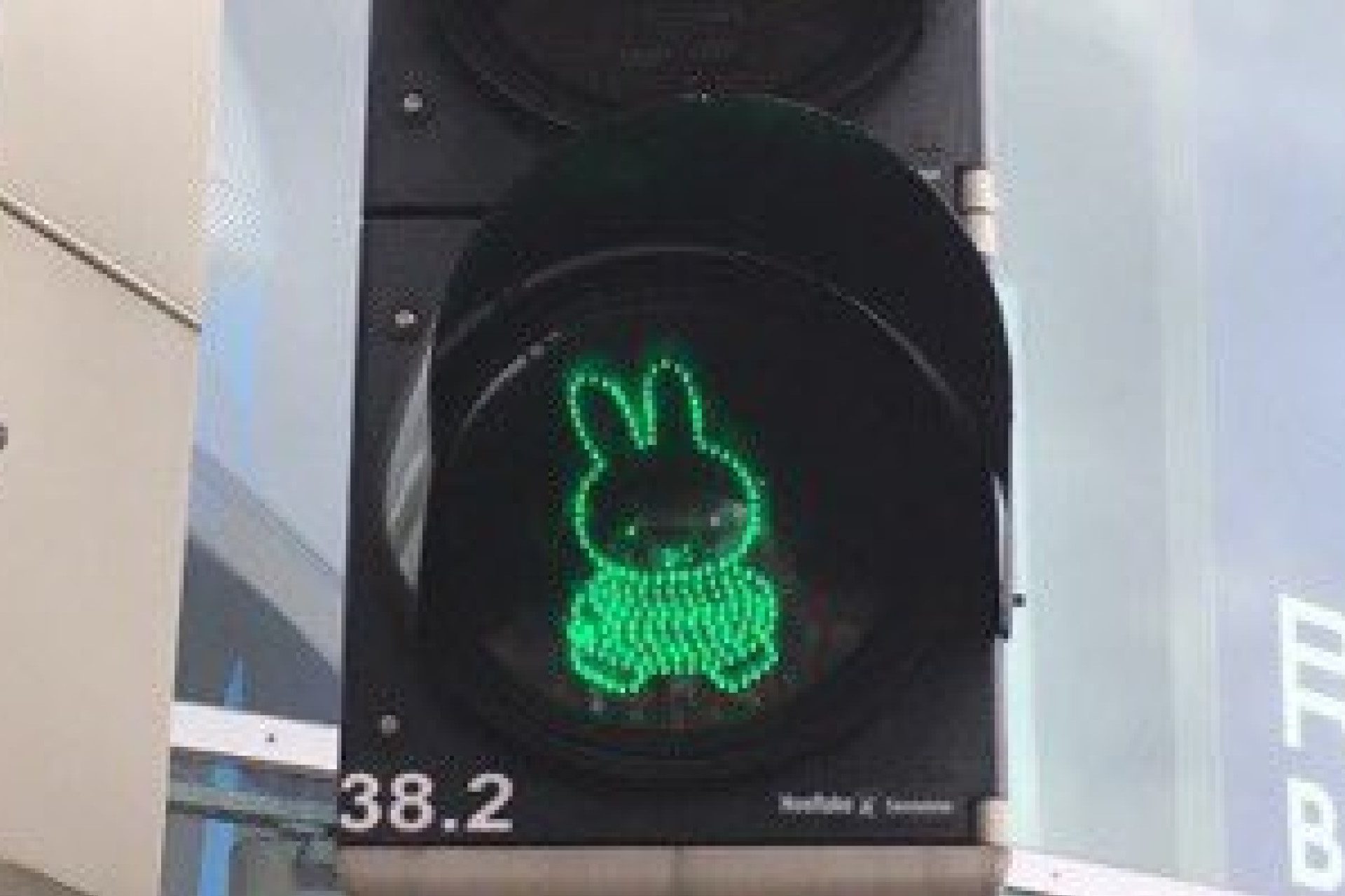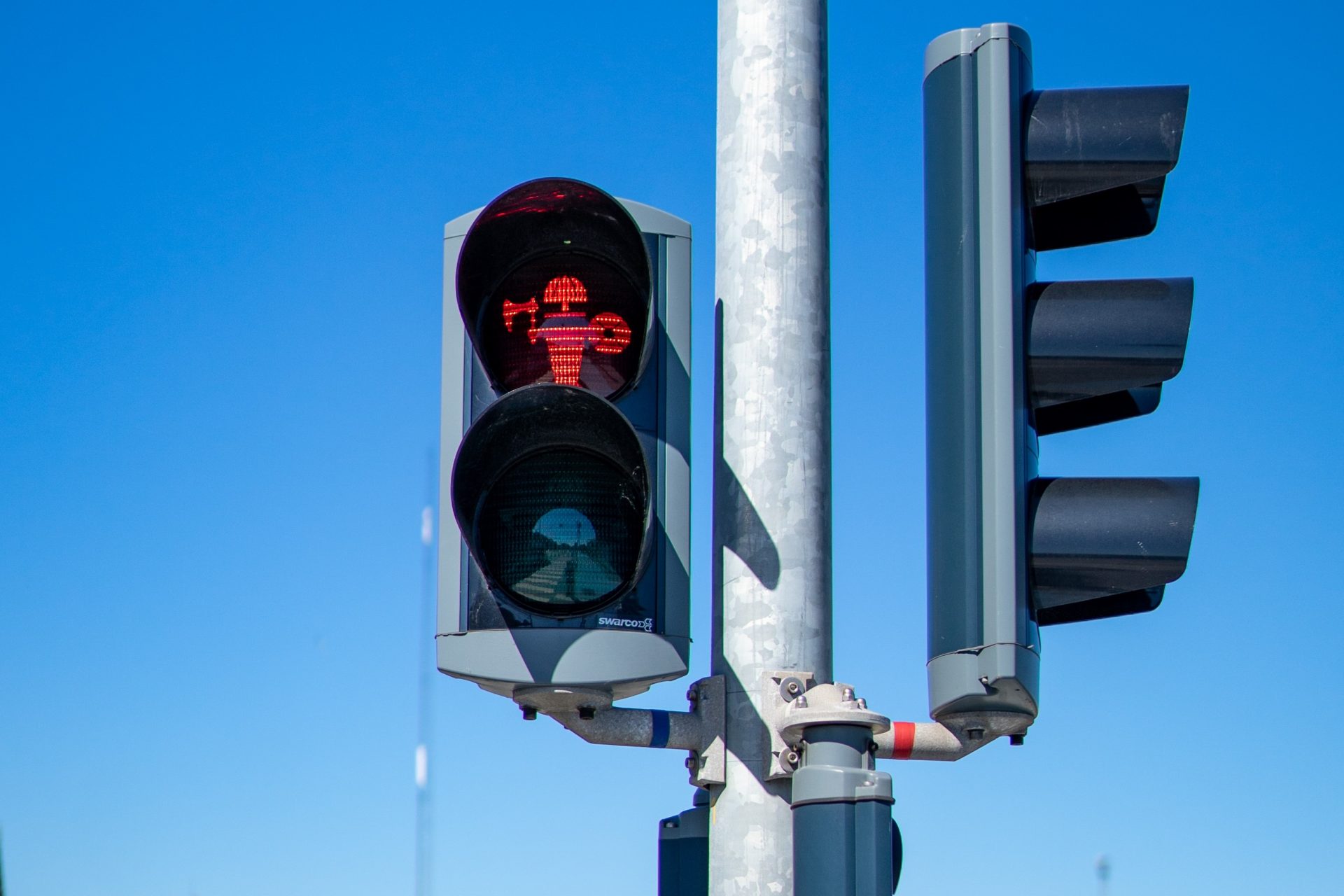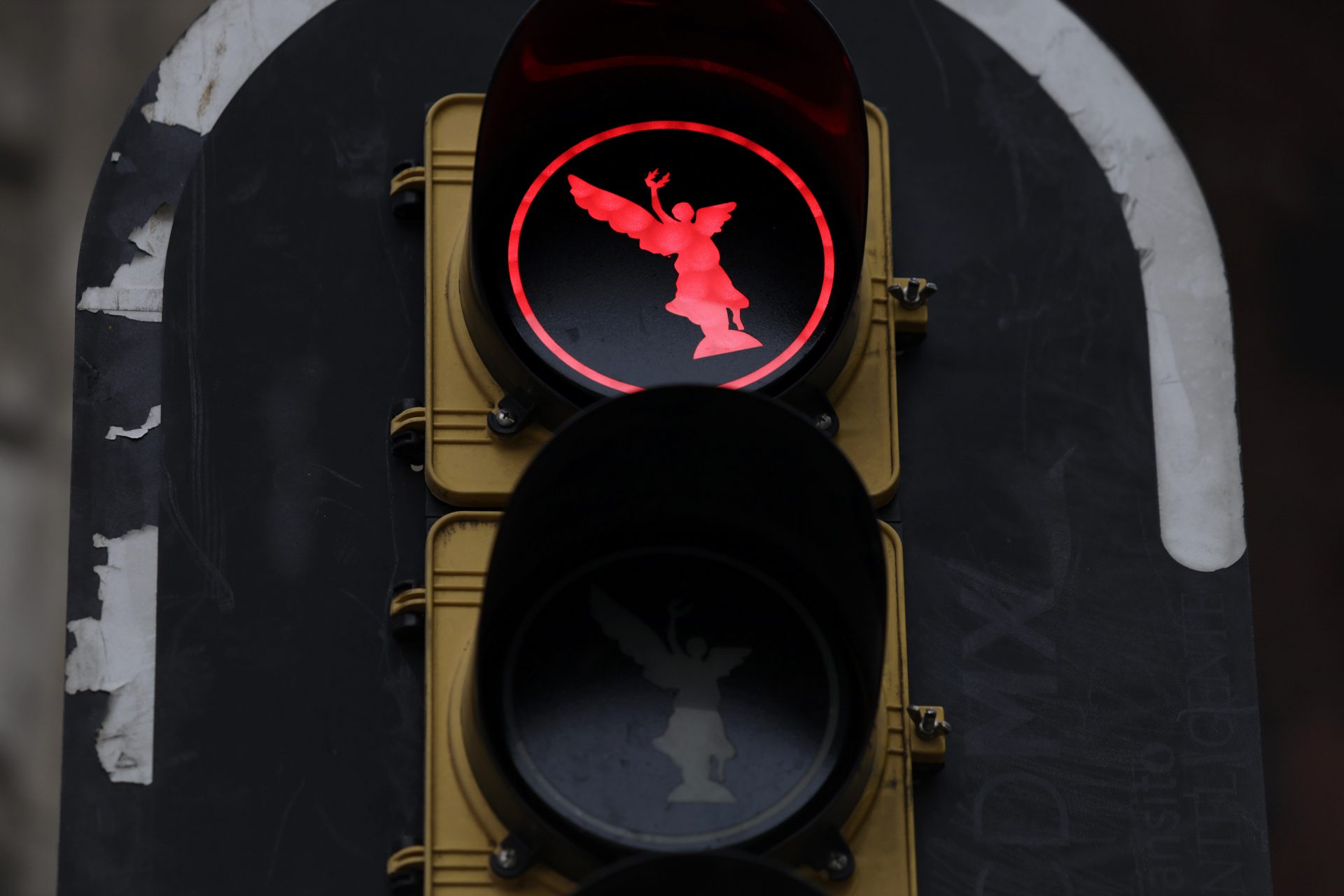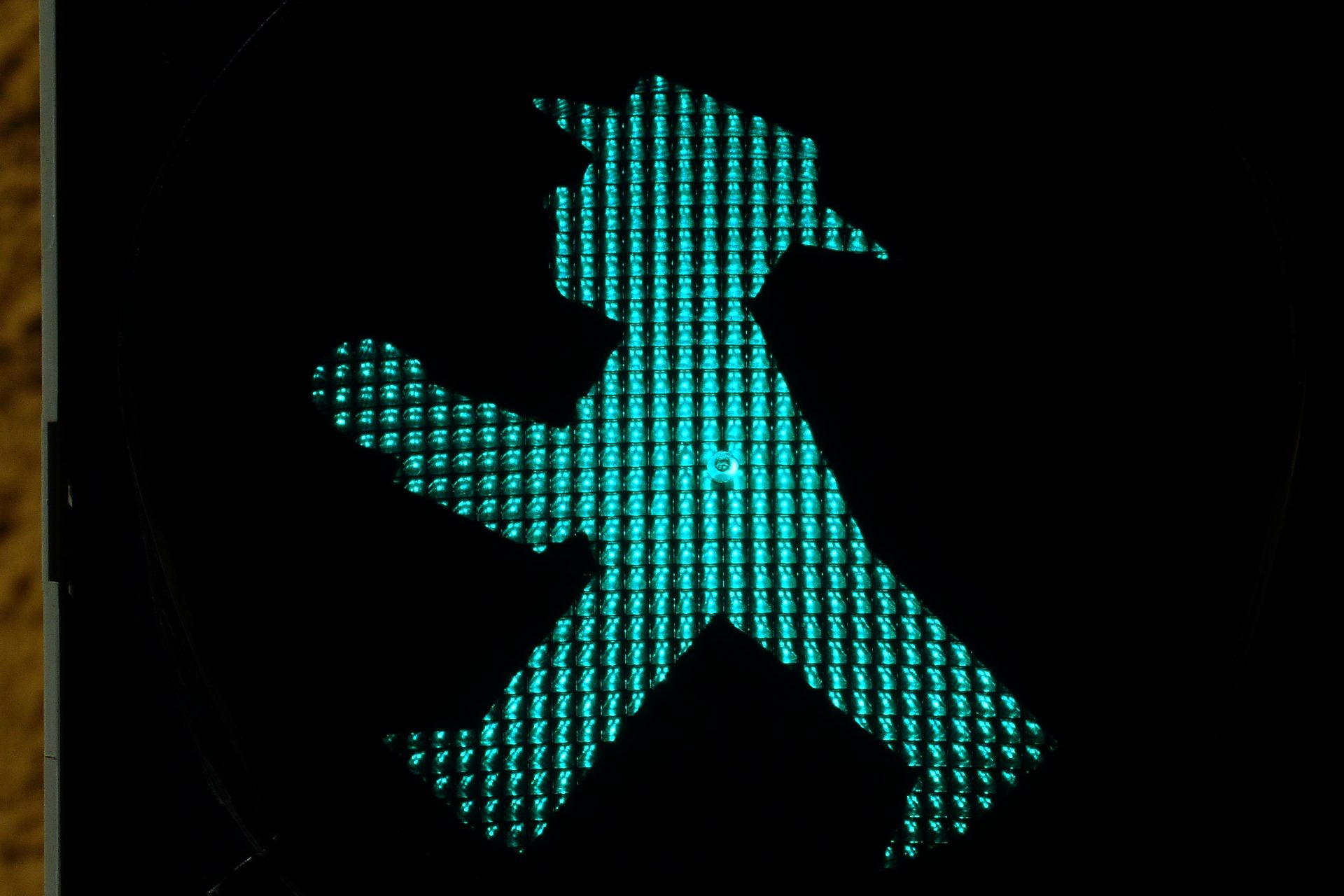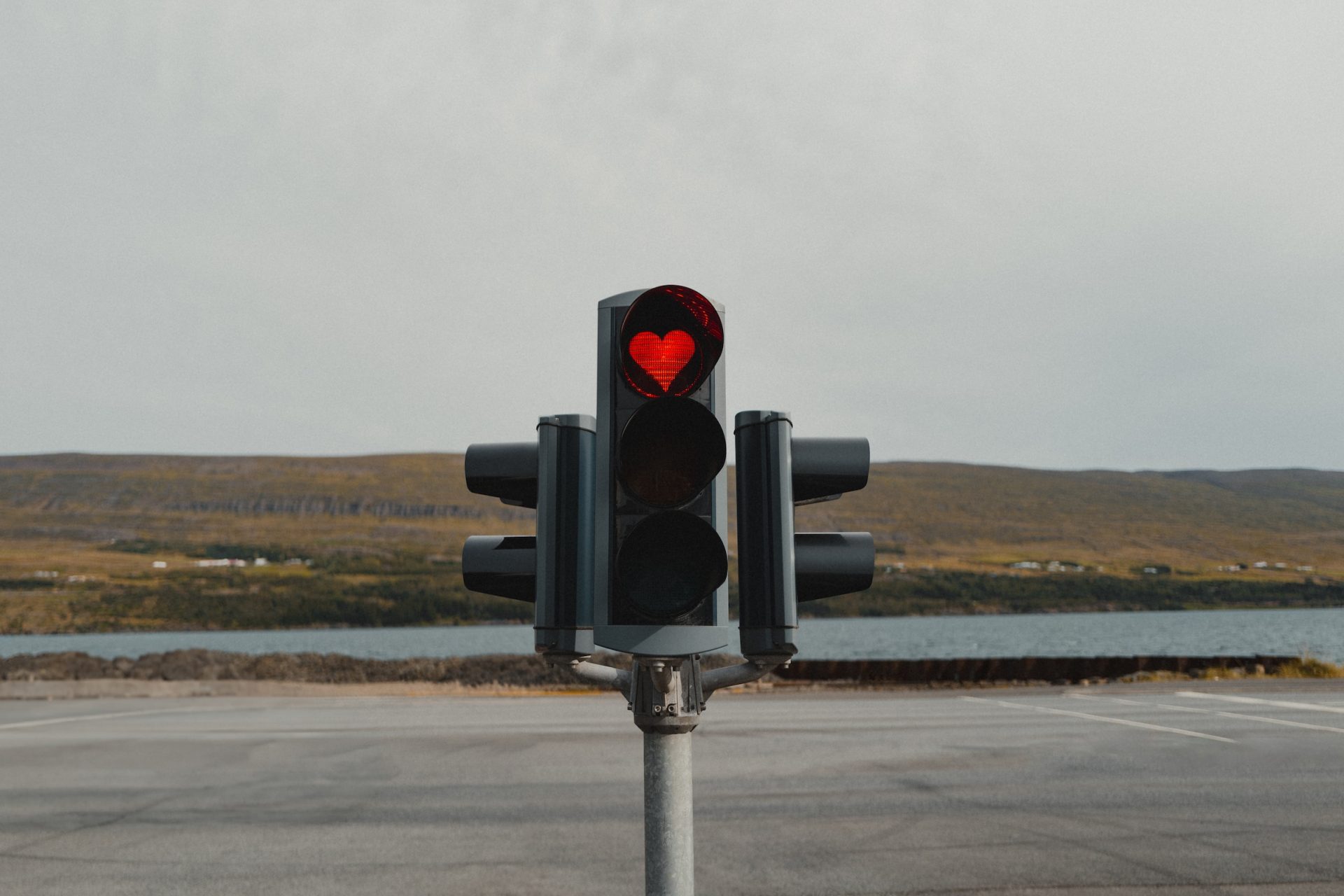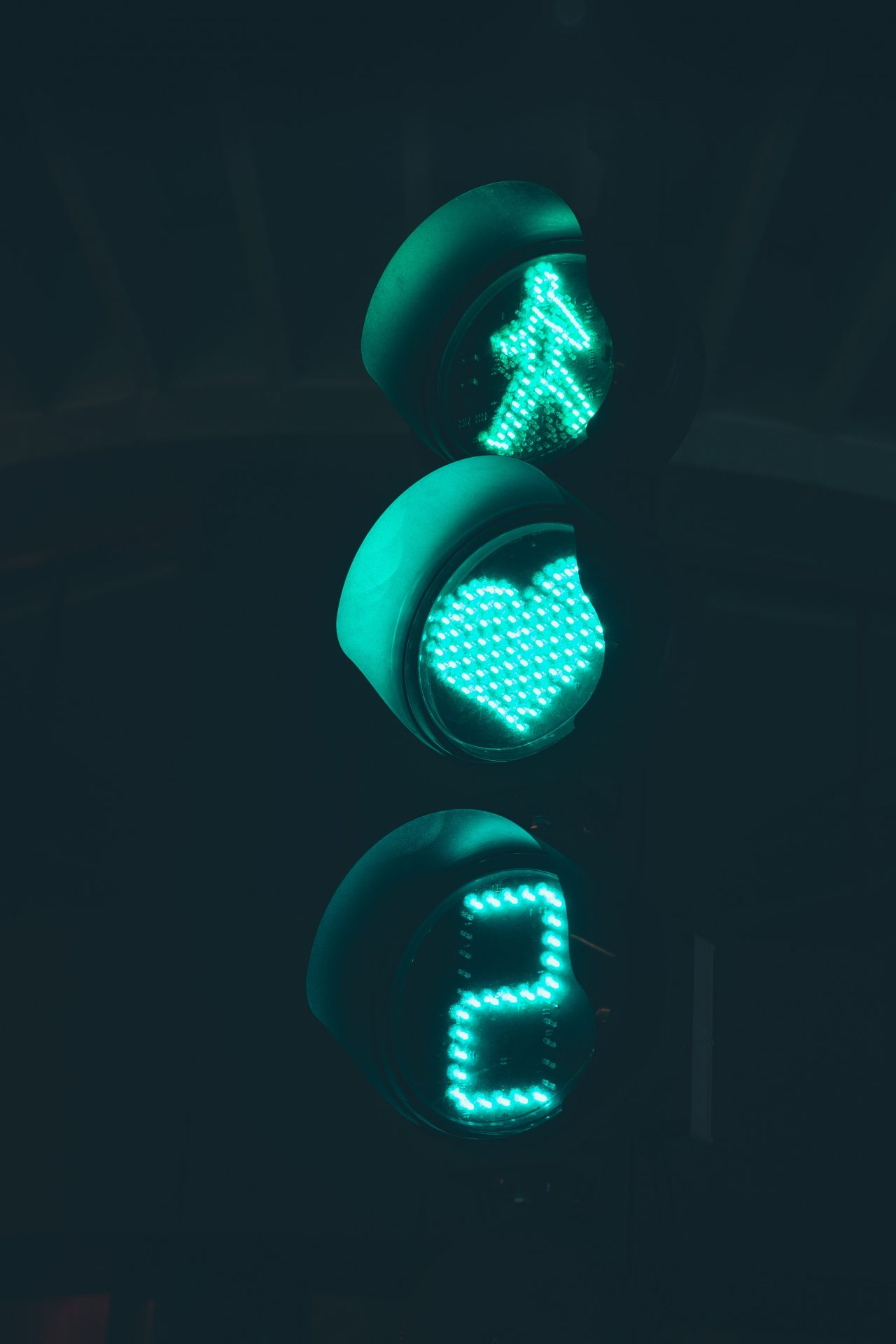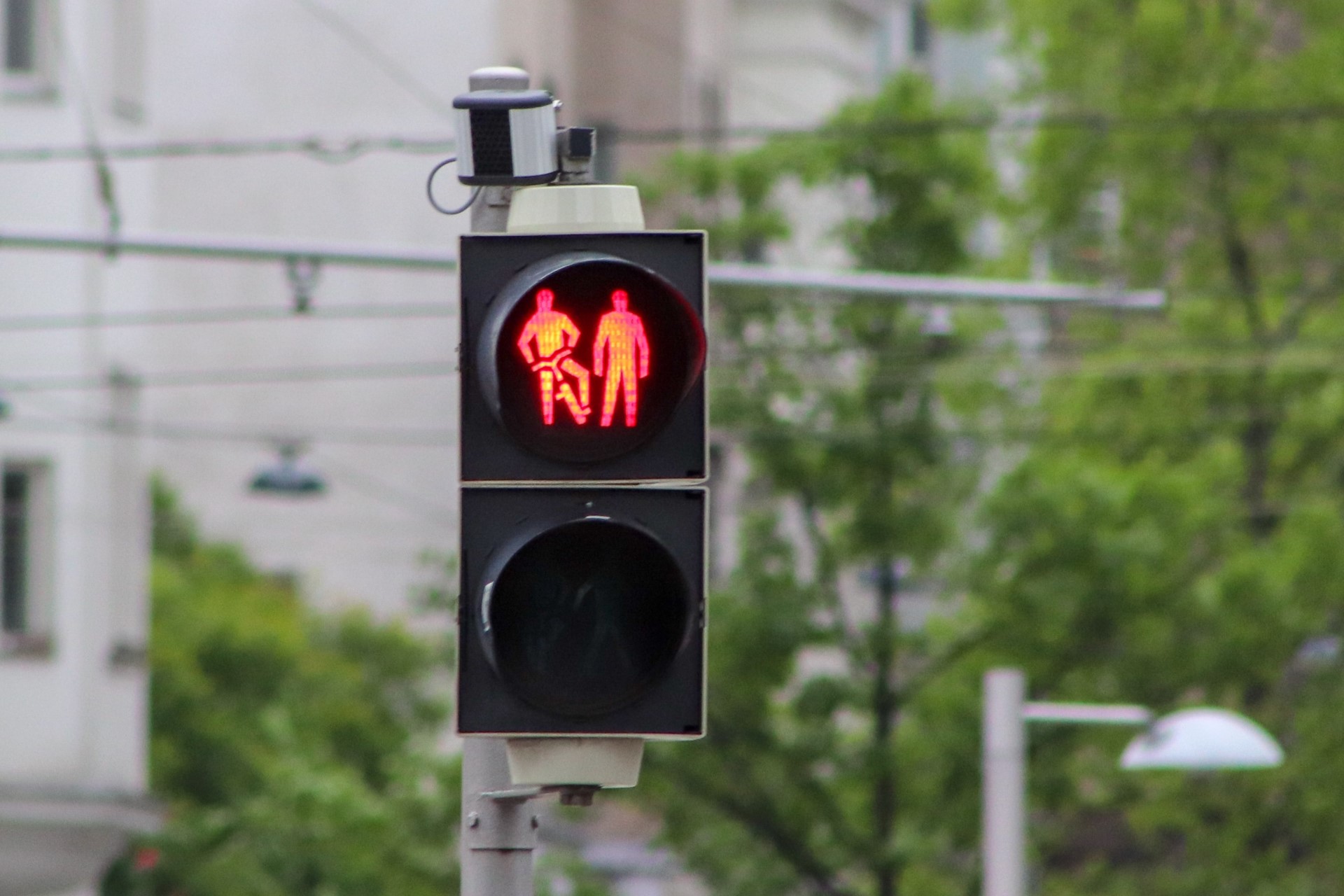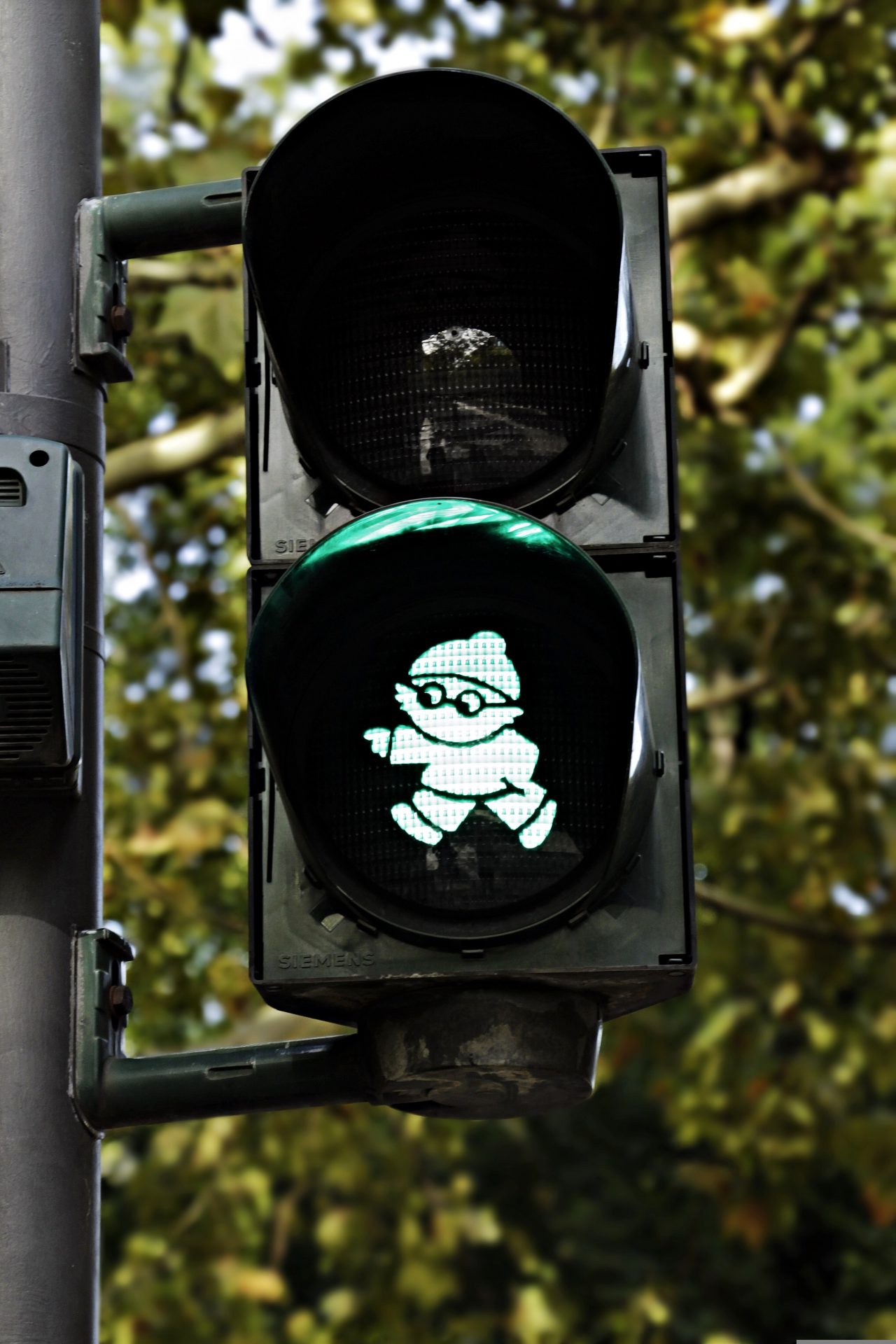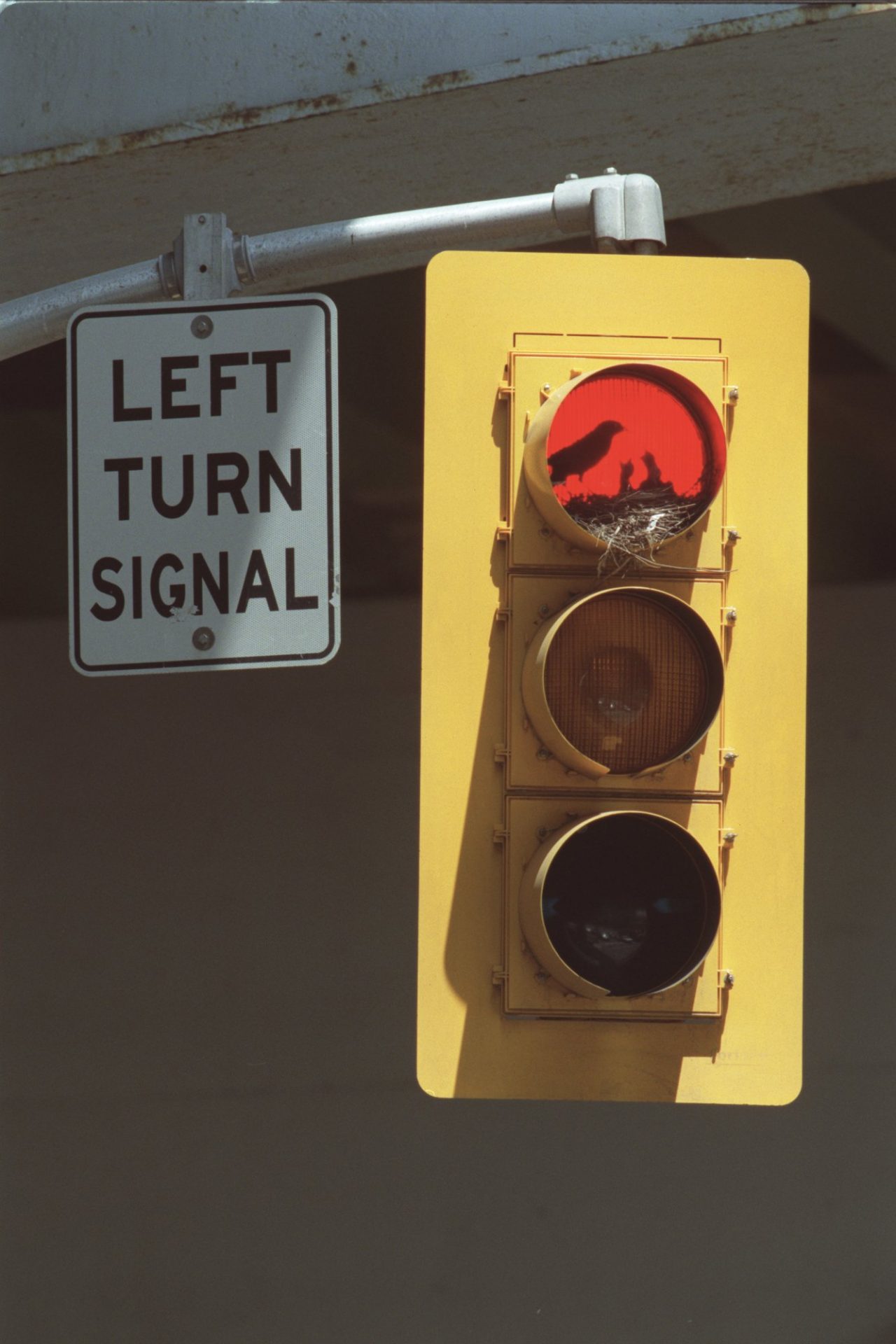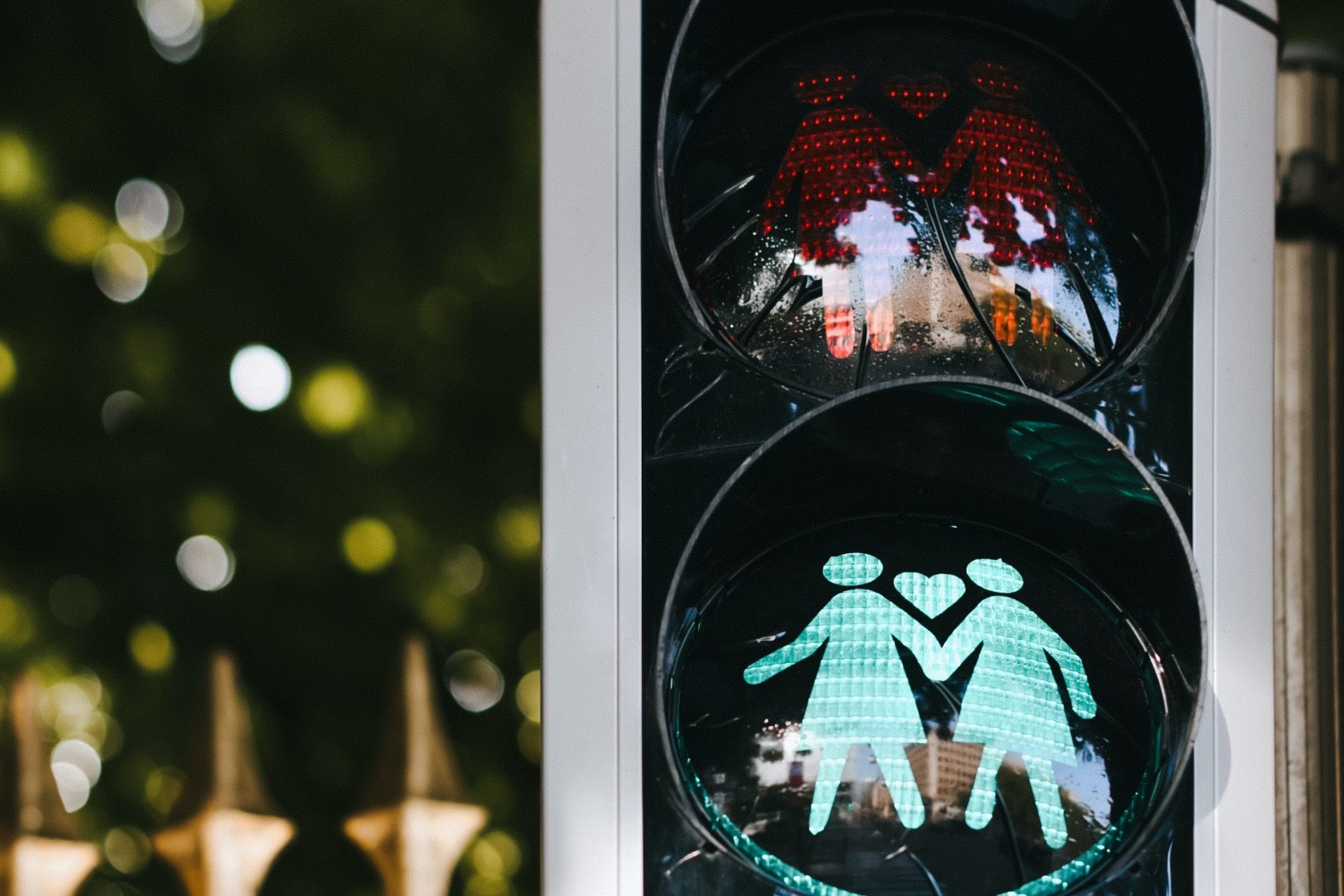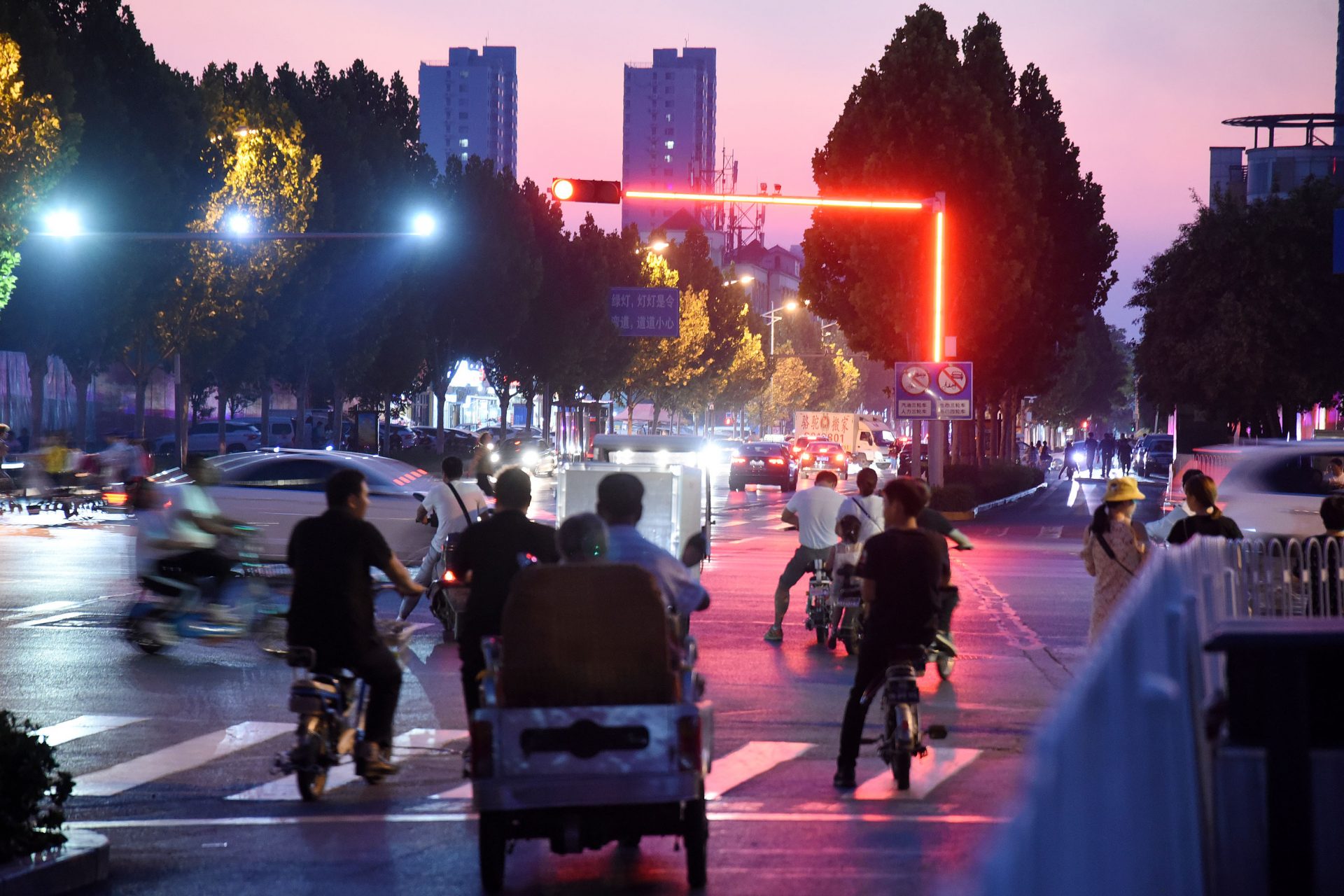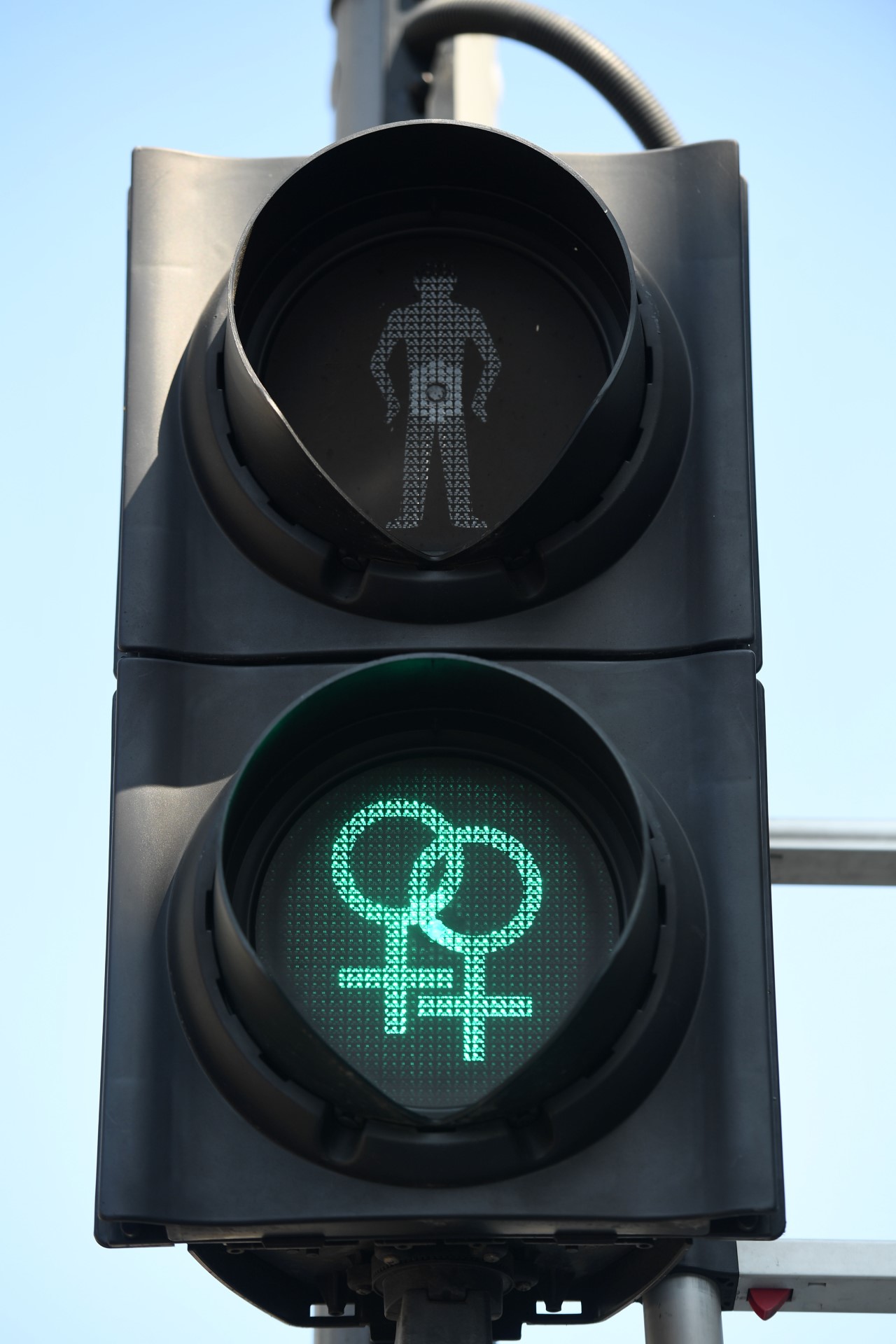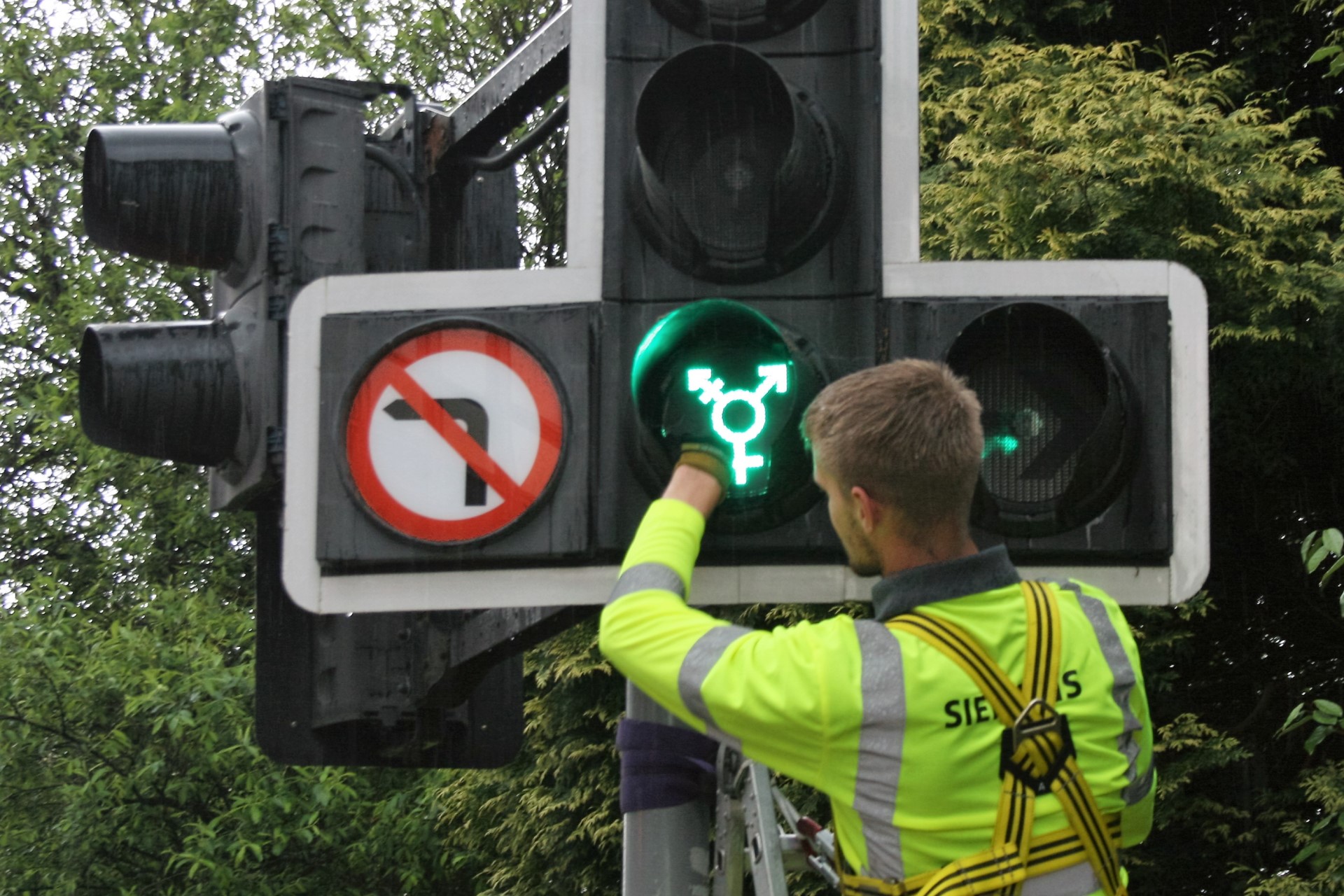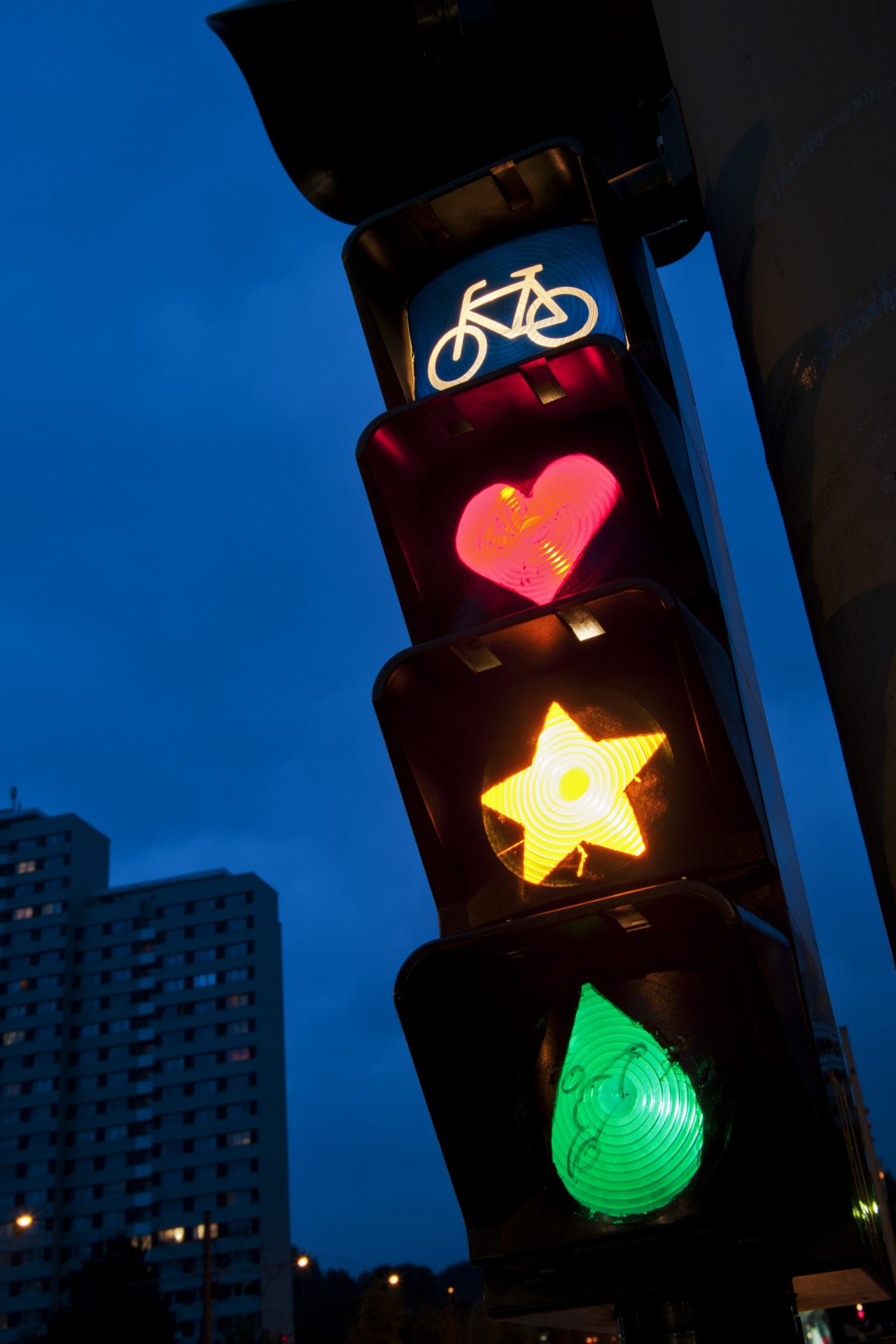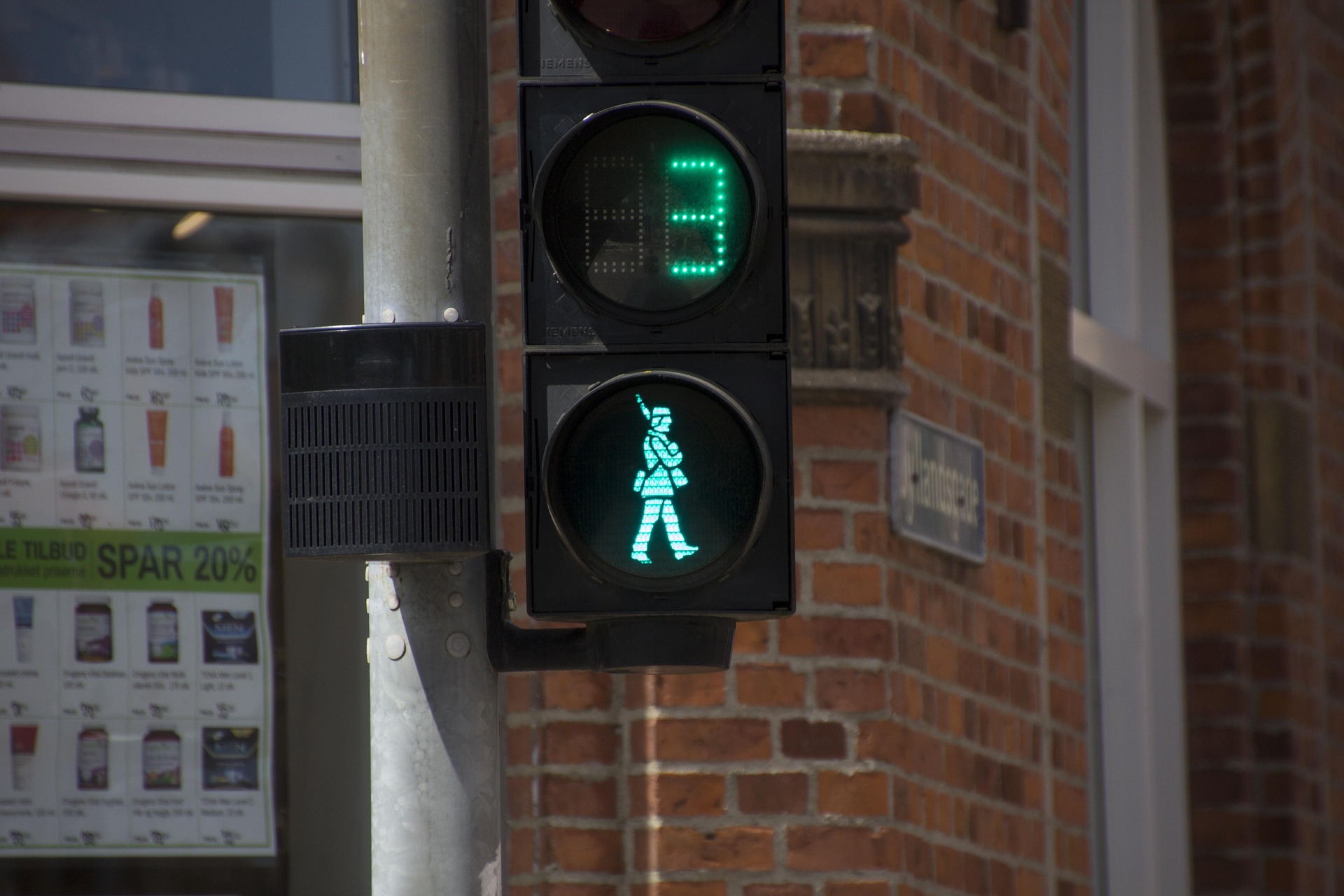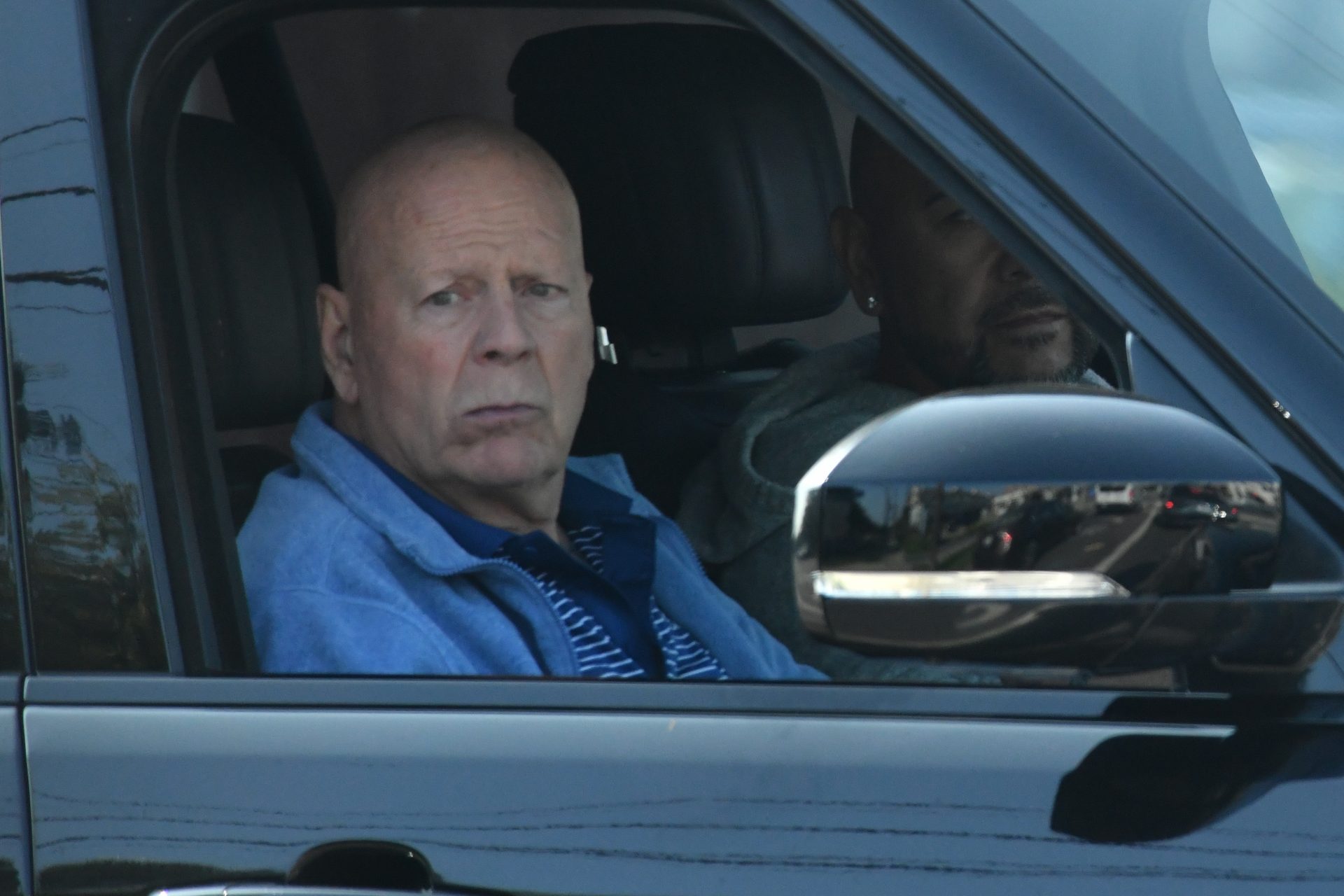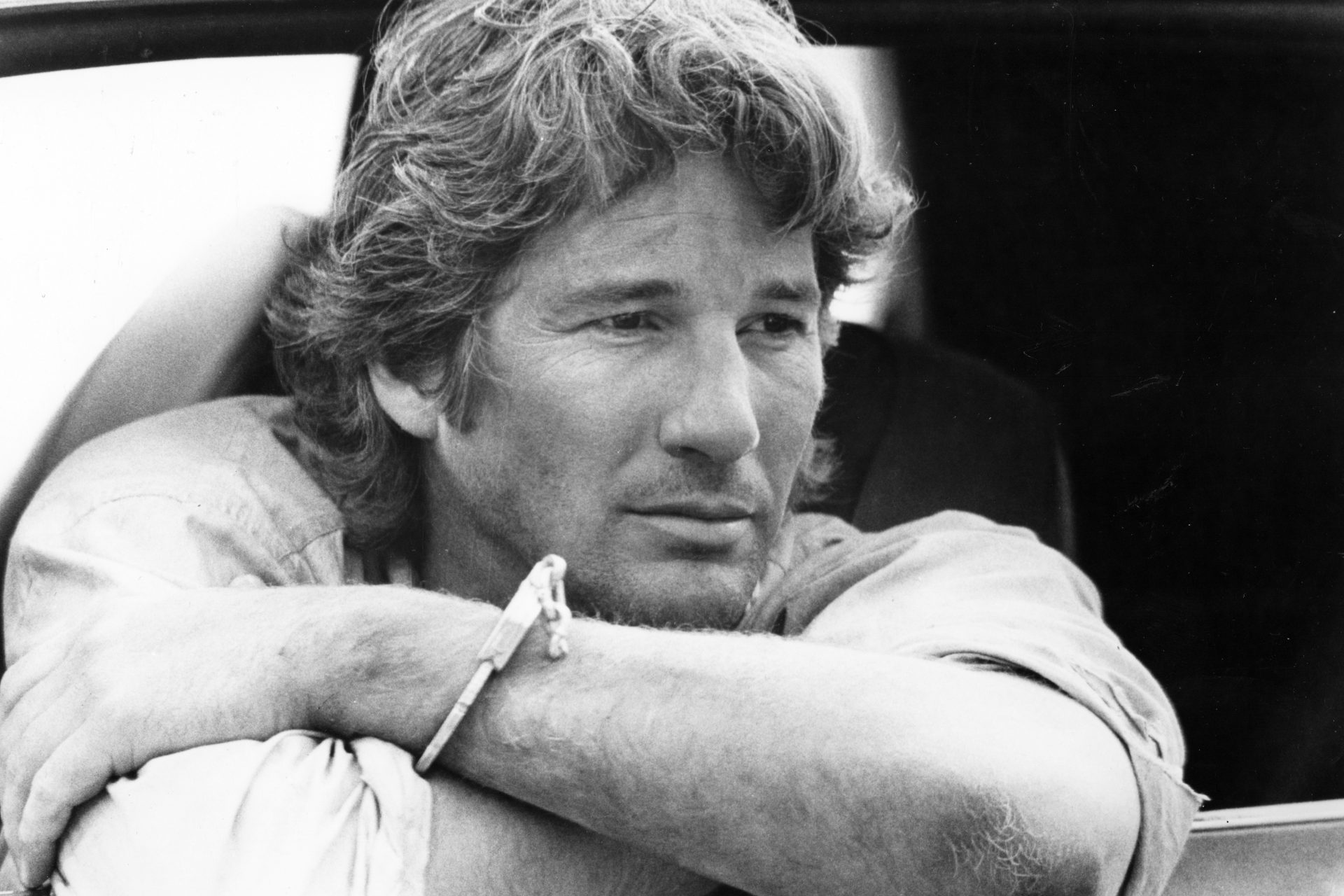Curious traffic lights around the world
As we all know, traffic lights are devices that are placed at intersections to regulate car, bicycle, and pedestrian traffic. But did you know that some city governments got creative with their traffic lights? Let's have a look at the famous invention and its varieties around the world!
In 1868, a London railway engineer - John Peake Knight - set up this device outside of the House of Parliament. It was meant to replace the human traffic officer. You can clearly see how Knight based the design on the railway signals of the time. The arms of the machine could be raised to tell people to stop, and after sunset, red and green gas lamps were added.
Curiously, the lamp did not work on its own. It required an officer to operate it all day. Moreover, the traffic light exploded barely a month after being launched.
In 1910, the American Ernest Sirrine elaborated on Knight's design and put the first automatic traffic light on a Chicago crossroads. It used the words 'stop' and 'proceed' to regulate traffic.
Many years have passed since those first designs - some more functional than others - and nowadays traffic lights look mostly the same around the world. Yet, some cities have gotten creative and made some adaptations to the standard device. Let's discover what they look like in this gallery!
Picture: minka2507 / Pixabay
Do you know Miffy? The little bunny was an invention of Dutch cartoonist D. Bruna. As he was born and died in Utrecht, Bruna's most famous creation (Nijntje in Dutch), was immortalized on a traffic light in the center of the Dutch city.
Picture: @dirkjanjanssen / X
In August 2019, traffic lights in Aarhus, Denmark's second-largest city on the east coast of Jutland, took on a Viking look. In 17 of them, a Viking shape could be seen, symbolizing Aarhus' close ties to the ancient Viking kingdoms.
Picture: Razvan Mirel / Unsplash
In 2018, the German town of Friedberg wanted to rock and roll to the rhythm of Elvis Presley, the soldier stationed in the town from 1958 to 1960. He had his home in neighboring Bad Nauheim and met his future wife Priscilla there. Now, the king of rock is moving to the rhythm of the lights of three traffic lights in Friedberg.
To celebrate the 213th anniversary of Mexican independence, the Zocalo neighborhood in Mexico City changed a few of its traffic lights into the Angel of Independence. It's the symbol that is also eternalized in a famous statue on one of the crossroads of the city's Paseo de la Reforma.
This is Berlin's famous 'Ampelmännchen.' Its design originated in 1961 in the former German Democratic Republic. By the 1980s, the character was a celebrity who was used for educational purposes in schools. It even had its own cartoon and radio program! Ampelmännchen is popular with tourists visiting Berlin. They buy postcards, T-shirts, sweets, and other souvenirs of dubious taste with the image of the little man on them.
Picture: Hans / Pixabay
The 2008 financial crisis hit Iceland hard. The authorities in Akureyri, located in the north of the country at the foot of the Eyjafjord fjord, decided to think proactively and use traffic lights to bring joy and justice to the residents. To do this, they turned the red circle on the pedestrian street into a heart.
Picture: Karsten Winegeart / Unsplash
In the Sichuan province of China, they felt the same way. A heart was added to the traffic light to spread a little happiness in the city of Chengdu.
Photo: Jida Li / Unsplash
In most cities, bicycles share their traffic lights with cars or have lights of their own. In Vienna, however, they are tied in with pedestrians. When the light is red, don't sit on your bicycle saddle but put your foot on the street.
Image: Rodrigo Curi / Unsplash
While Berlin has its Ampelmännchen, Mainz has got its own figurine: the Mainzelmännchen. The word is a combination of the city's name and the mythical gnome that was said to roam the city of Cologne: the Heizelmännchen. The character appeared on German TV and was sold as a doll or in books. In 2013, on the 50th anniversary of its creation, the little guy began to be part of some traffic lights in the city.
Picture: NoName_13 / Pixabay
Another curious traffic light with its own name is Sophie from Amsterdam. The figure of Sophie crosses the street, ponytail waving in the wind. The fact that she is a curvy woman has a practical reason: Pedestrians seem to pay more attention to female figures than to the classic males in other traffic lights.
Photo: @albertofm_.d / X
This beautiful traffic sign was not man-made but instead by a bird building its nest right in front of a red light. You could see it feeding its young while waiting for the green light to turn on. The beautiful scene appeared in 2002.
Belgium is one of the many gay-friendly countries in Europe. In some Brussels neighborhoods, you can see traffic lights such as this one with two women holding hands. The heart between them makes it clear that they are romantically involved.
Photo: Gaelle Marcel / Unsplash
To reduce the number of traffic violations, the city of Handan in the Hebei Province of China has added as many lights to the stop-and-go sign as possible. Even the poles have lamps! Whether people will really obey the lights now that there are more of them, is a question that remains to be answered.
To celebrate LGBTQ+ pride in 2019, Siemens helped the city of Edinburg install gay-friendly traffic lights. The green light you see here represents a couple of women. According to Siemens' website, "35 pedestrian symbols / traffic signal images [were] replaced with a range of diversity images."
Image: Siemens Mobile
The designers of Siemens made four different kinds of lights, representing different types of relationships. The one they are installing in this photo represents the trans couple. As Siemens says, the lights were based on similar symbols displayed in London during pride months.
Photo: Siemens Mobile
Germans are particularly creative about their traffic lights. How about this one, with a heart, a star, and a drop of water to represent the three instructions for cyclists?
In the city of Fredericia, the traffic light has a peculiar, martial design, with two soldiers carrying rifles. This town is an important military center that houses the military staff of Denmark. What a way to honor the men and women serving the country, right?
Photo: Image by Hans Hansen / Pixabay

